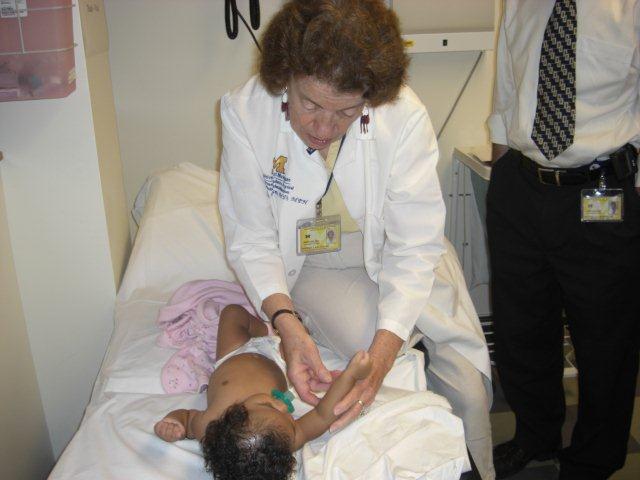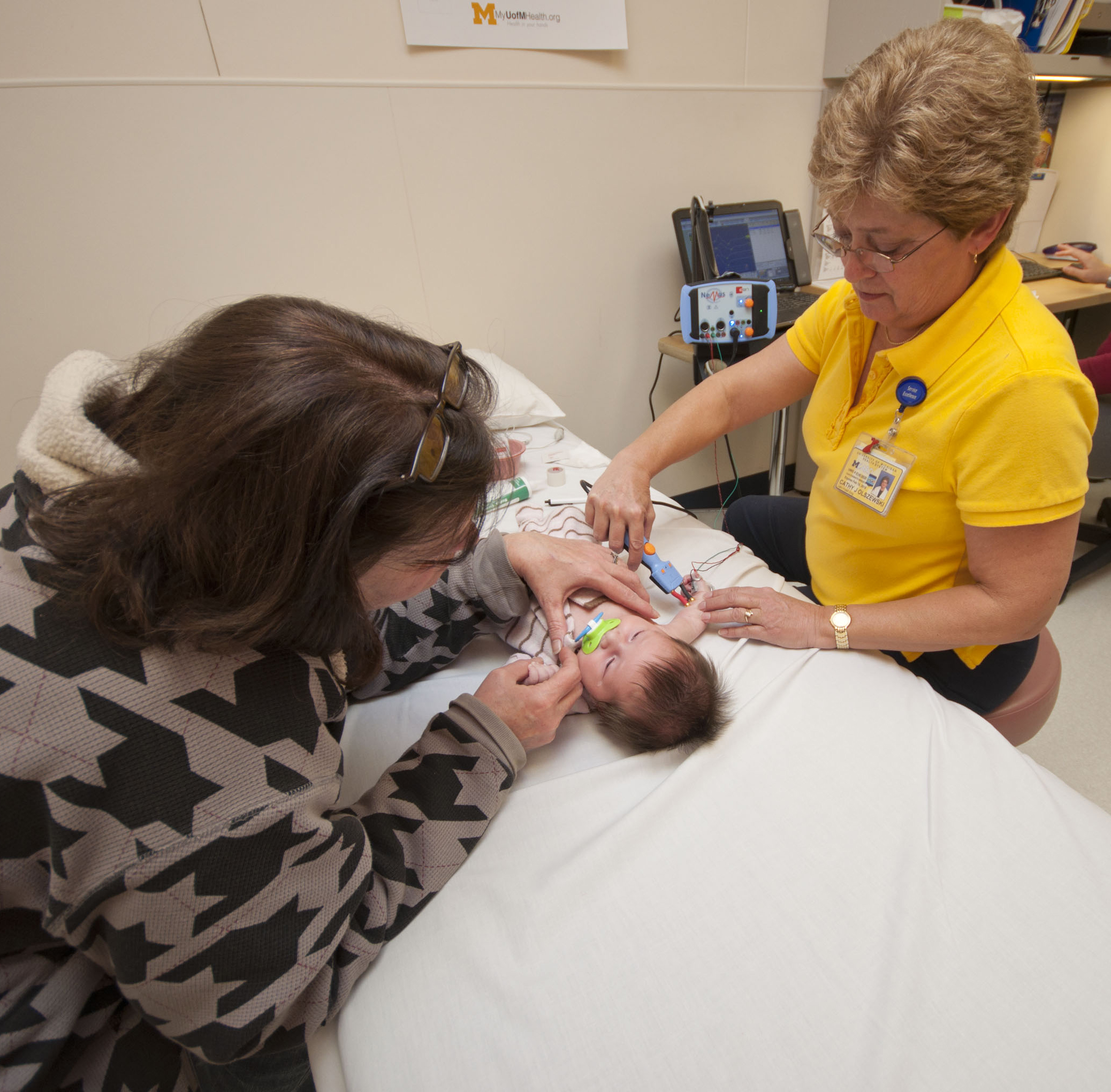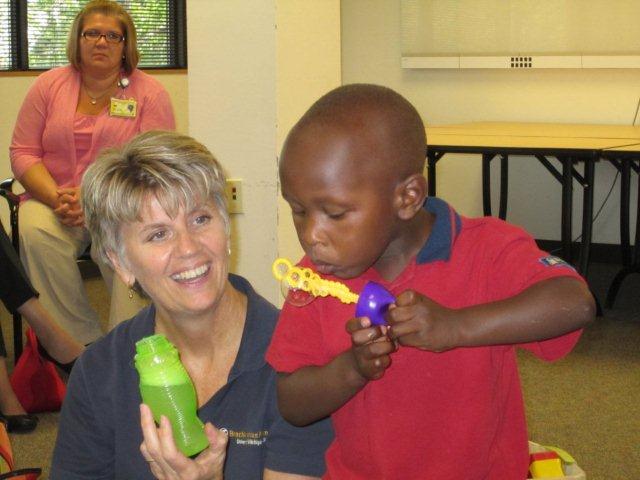For the nurse practitioner or physician assistant seeing the patient with neonatal brachial plexus palsy (NBPP) -- we suggest the following paradigm for your initial evaluation, conservative management, and/or referral to a specialty NBPP Center. The initial evaluation of the neonate with suspected NBPP includes a thorough History and Physical examination to
- establish the diagnosis of NBPP and

- evaluate for and treat associated conditions, including torticollis, plagiocephaly, diaphragmatic palsies, and skeletal fractures.
Early education and open communication with the infant’s parents about NBPP and its implications can improve the outcomes for NBPP patients.
History
The history suggested below assesses for parameters that may be associated with NBPP. Mother’s history –
- gravida / para
- shoulder dystocia with current or prior births
- NBPP with current or prior births
- diabetes with current or prior pregnancies
- weight gain during pregnancy
- age at pregnancy
Labor and Delivery -
- location of delivery
- delivered by what specialist
- duration of labor
- cephalic or breech presentation
- induced or spontaneous
- vaginal or C-section
- birth aids used during delivery (vacuum or forceps)
- birthing maneuvers used during delivery
Baby’s history –
- gestational age at delivery
- APGAR at 1,5 and 10 minutes
- birth weight
- birth length
- fractures of the humerus or clavicle
- difficulty with breathing or feeding
- ICU admission
- other co-morbidity diagnoses
- immediately after birth, presence of movement at
- shoulder
- elbow
- wrist
- fingers
- thumb
Examination
The examination suggested below can supplement the standard “well-baby” examination (vitals, growth curves, and charting of developmental milestones). Observation
- Asymmetry of eyes (droopy eye/ Horner’s syndrome)
- Asymmetry of chest expansion with breathing
- Head preferentially turned to one side (Torticollis)
- Spontaneous movement of arm at
- Shoulder
- Elbow
- Wrist
- Fingers
- Thumb
Motor Function
- Passive movement
- Clicking or resistance when arm moved by examiner
- Full or decreased range of motion when arm moved by examiner
- Wrist
- Fingers
- Thumb
- Active Movement
- Arm moves out to the side (like snow angel)
- Bends elbow (brings hand to mouth)
- Straightens elbow (lifts arm off face when supine)
- Wrist bending / wrist entending
- Make fist
- Opens hand
Sensation – cries to pinch over
- Shoulder
- Biceps
- Triceps
- Index finger
- Pinky finger
- Thumb
Ancillary Testing
Radiographic imaging (MRI, CT myelo, US) can be useful to assess the extent and severity of NBPP. X-rays may be useful if skeletal fractures are suspected.

Electrodiagnostic (EDX, NCV, EMG) testing of infants with NBPP is a very specialized study, best performed at a specialty center with an experienced electrodiagnostician. Many published reports indicate that EDX may be overly optimistic, so the EDX must be taken in the context of the clinical history and examination. Interpretation of the EDX findings are quite difficult, and use of the EDX to determine prognosis remains controversial.MRI of the infant brachial plexus is a specialized study, best performed at a specialty center. Ultrasound of the infant brachial plexus is a specialized study, best performed at a specialty center by an experienced ultrasonographer CT and/or CT-myelogram is becoming obsolete as MRI carries fewer risks.
The Next Step
Occupational /physical therapy (OT/PT) referral should be provided to encourage retention of full range of motion at all joints and to reduce the risk of contractures. Additionally, OT/PT treatment of torticollis is encouraged. Splinting of particular joints may be appropriate. Regardless of the extent and severity of NBPP, OT/PT should be started as soon after birth as possible, except in the presence of skeletal fractures. Home exercise program should be instituted with guidance from OT/PT and booklets or multimedia (DVD for home exercise program is available upon request to all practitioners). With appropriate conservative treatment, the majority of infants with NBPP recover spontaneously within the first few months of life and subsequently progress to near complete recovery of motion and strength.

However, for those infants who do not demonstrate increasingly substantial recovery by 3 months of age, referral to a NBPP specialty center can improve the functional outcome of the patient. Options for specialty care include more complex conservative management (e.g. Botox) and surgical interventions for nerve reconstruction, tendon transfers, and skeletal stabilization. If you would like to refer your patient to our specialty center, please click here.
